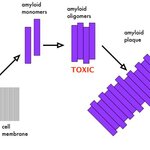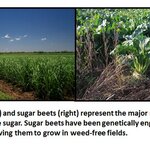Genetics & Molecular Biology

Sudden death in patients with hypertrophic cardiomyopathy (HCM) is sometimes associated with exercise, but that may be just medical reductionism looking for any answer. Instead, a number of factors could have been involved, since nearly 80% of patients in the study had no symptoms and only one in five had been diagnosed with HCM before their death, according to research presented at ESC Congress 2016 today by Dr Gherardo Finocchiaro, a cardiologist at St George's University of London.
That's no reason to take up Crossfit, with its ridicule of people who have had organ injury…
Researchers have identified a DNA variation in a gene called PDSS2 that appears to curb coffee consumption. The authors suggest that the gene reduces the ability of cells to breakdown caffeine, causing it to stay in the body for longer.
This means that a person would not need to consume as much coffee to get the same caffeine hit.
The researchers looked at genetic information from 370 people living in a small village in south Italy and 843 people from six villages in north-east Italy. Each of the study participants was asked to complete a survey that included a question about how many cups of…

G proteins are molecular switches on the insides of cell membranes. They convey important signals to the inner workings of the cells. The associated receptors are targeted by all kinds of medications. Scientists are now shedding light on precisely how the individual amino acids of the G protein move during the switching process. The discovered mechanism signposts new approaches to the design of new active agents.
The human body is like a huge team project. Millions of cells, structured into tissue and organs, assume various tasks and support, coordinate between and regulate each other. For…

Whitehead Institute scientists have created a checklist that defines the "naive" state of cultured human embryonic stem cells (hESCs). Such cells can mature into almost any cell type and more closely resemble the unique molecular features of pluripotent cells in the early human embryo than adult stem cells. Since the late 1990s, scientists have been very interested in working with naive stem cells, but they have been more hope than promise; they don't even have a common definition of what makes a cell truly naive.
For years, most ESC research focused on mouse cells because they are readily…

Dietary restriction, or limited food intake without malnutrition, has beneficial effects on longevity in some species, like rats, but they have to be weaned on it.
Despite that, a paper in PLoS Genetics claims it works in humans, probably to get mainstream media attention but will almost surely show that open access is even worse about peer review than subscription journals. Except despite claiming it works on humans, they do their study in roundworms, which in this case has zero relevance to human longevity, which means peer reviewers can say they addressed the study, while the…

Though basic research is incredibly valuable, without applied results it has limited use for the public. And that means limited funding. The U.S. government spent $5 billion this century convincing young scholars that government-funded research was real research and they would have freedom and not be corporate controlled.
Their public relations campaign worked too well. Everyone wanted to stay in college, to such an extent that only 6 PhDs were competing for each job each year. Post-doctoral positions started to look like careers, and some positions even required you work for free. The…

Some cultures have
demonized alcohol while others have welcomed it. Modern research has confirmed
that over indulgence in alcohol is bad for you but also shown that moderate
drinking increases health and life expectancy. Most of the beneficial effects
appear related to the heart and circulation – but not all. Recently, positive
effects of alcohol have been shown for both Alzheimer’s disease and diabetes –
but these are less clear cut.
As is widely known, Alzheimer’s
disease has become a major problem in advanced societies, as life expectancy
has increased. At present, there is no cure for…

On Memorial Day my sister and brother-in-law took me to visit an extraordinary commercial nursery West of Chicago called “The Planter’s Pallet.”
There I saw a huge and diverse collection of ornamental species and varieties destined to grace the yards and gardens of local plant lovers.
I was inspired both by the astonishing range of form that nature provides, but also by the co-creative role of mankind in amplifying that diversity in ways that appeal to our human enjoyment of color, shape, texture, aroma and even sense of humor. As someone who often wrestles with weighty questions like the…

A new study published in Diabetologia finds that children with a strong family history of cardiovascular disease (CVD) and/or type 2 diabetes were found to have cholesterol levels significantly higher than children with no family history of those conditions.
The research found that one third of the 12-year-olds studied had a strong family history of one or both diseases. This group also had unfavourable levels of cardiometabolic markers in the form of higher total cholesterol, and a higher ratio of total cholesterol to HDL cholesterol than the groups with moderate or no family history of…

Several
times a year I find myself exiting the Florida’s Turnpike at Yeehaw Junction
and heading south. When I get to the
small town of Okeechobee I take a left and head down Route 98 through Florida’s
extensive agricultural backyard. Flanked
by Lake Okeechobee on the west and the affluent cities of the Atlantic coast off
to the east, the small towns nestled in this sliver of land support vibrant
production of sweet corn, cattle, lettuce, and sugarcane. Cane-derived sugar
ends up in many cupboards as table sugar, and also is found in many consumer
products.
As reported on…